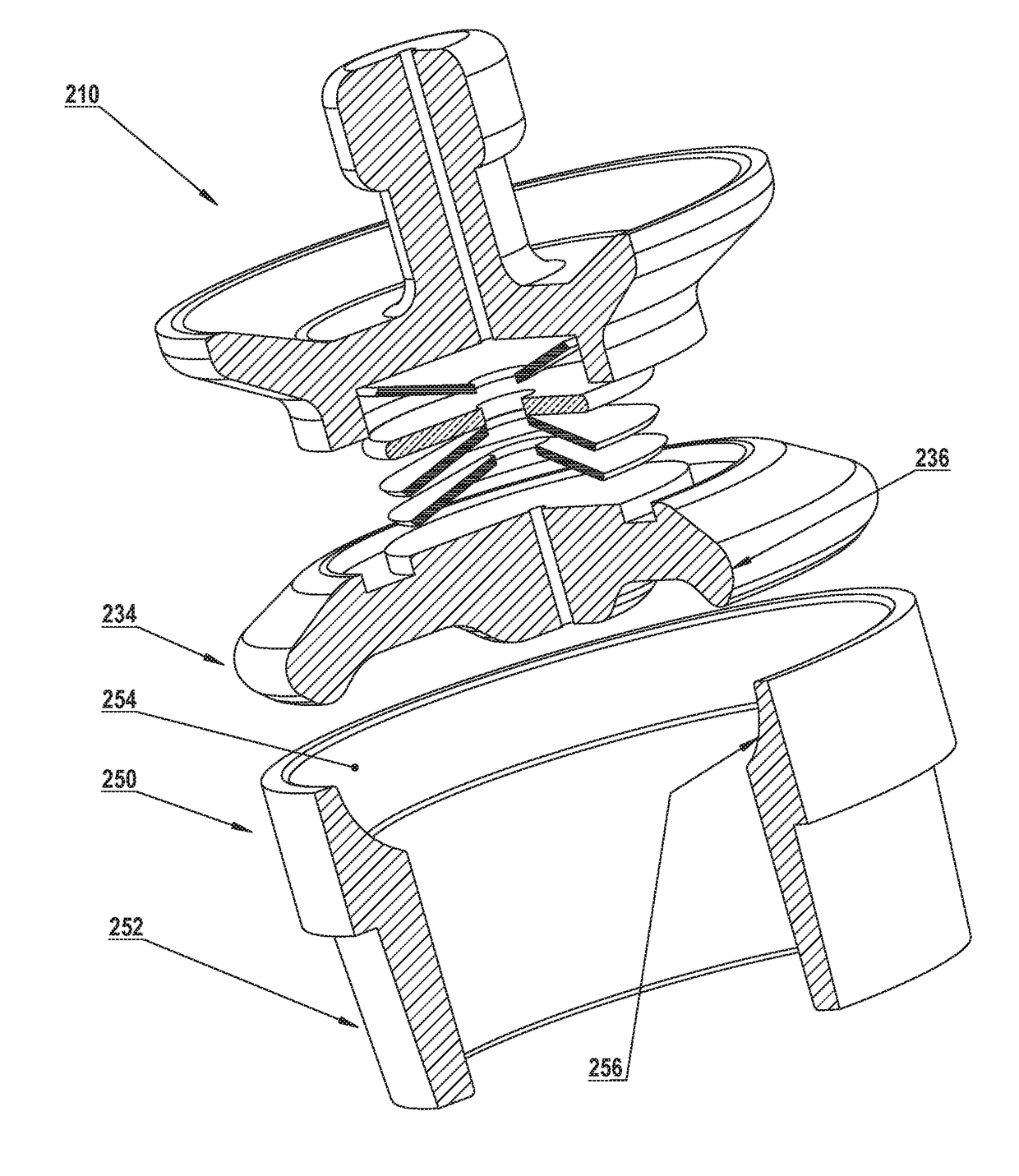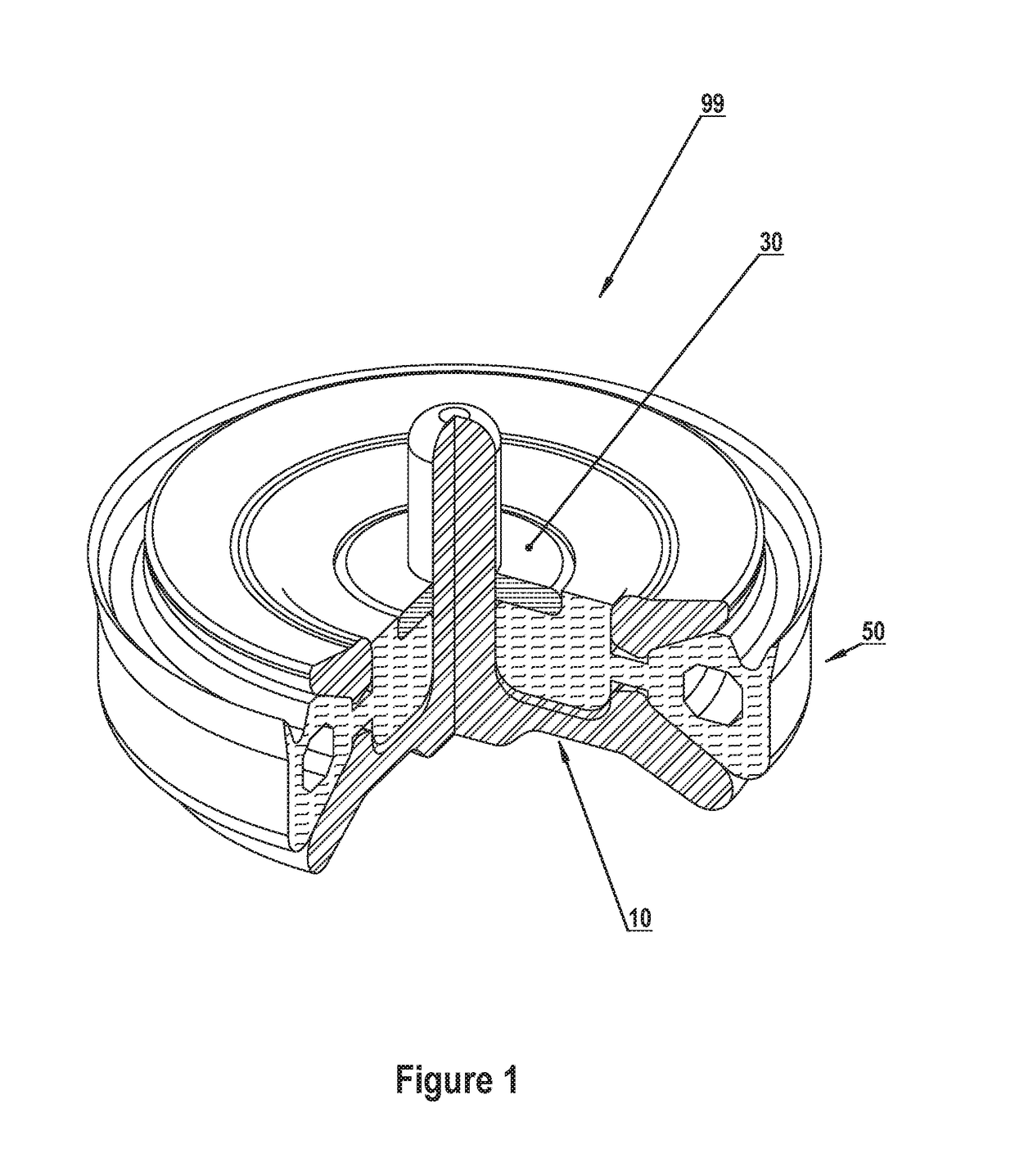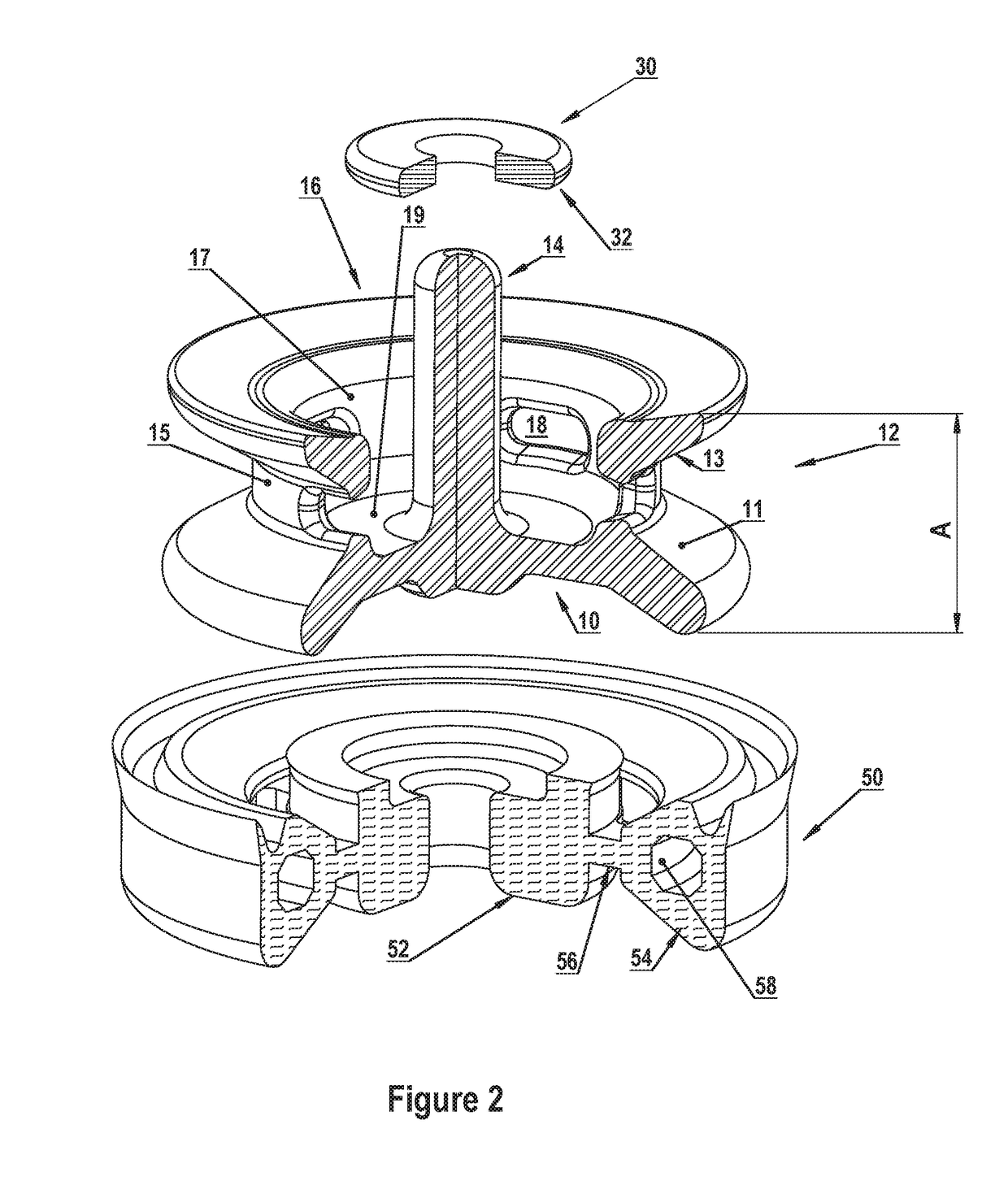Adaptive Stimulation System
- Summary
- Abstract
- Description
- Claims
- Application Information
AI Technical Summary
Benefits of technology
Problems solved by technology
Method used
Image
Examples
embodiment 99
[0186]Referring to FIGS. 1 and 2 in greater detail, a tunable check valve assembly / tunable radial array embodiment 99 comprises viscoelastic body elements 50 which comprise, in turn, reservoir (central) element 52 coupled to groove (peripheral) element 54 via radial fenestration (tension) elements 56. Elements 52, 54 and 56 are disposed in (i.e., integrated with and / or lie substantially in) reservoir 16, groove 12 and fenestrations 18 respectively to provide a tuned radial array having at least a third predetermined resonant frequency. An adjustable preload flange 30 is coupled to guide stem 14 and contacts viscoelastic reservoir element 52 in reservoir 16 to impose an adjustable annular constraint on viscoelastic reservoir element 52 for achieving at least a first predetermined assembly resonant frequency substantially similar to, for example, a measured resonant frequency (e.g., a pump housing resonant frequency). Such adjustable annular constraint imposes an adjustable shear prel...
second embodiment
[0187]The above embodiment may be installed in a pump housing having a measured housing resonant frequency; the measured housing resonant frequency may then be substantially replicated in the (similar) first predetermined resonant frequency of the tunable check valve assembly. Such a combination would be an application of an alternate embodiment. An analogous tuning procedure may be followed if the tunable check valve assembly of the second embodiment is installed in a pump having a (similar or different) resonant frequency substantially equal to the second predetermined resonant frequency. This synergistic combination would broaden the scope of the valve assembly's beneficial effects, being yet another application of the invention's alternate embodiment.
[0188]Note that preload flange 30 may have a non-cylindrical periphery 32 for imposing on viscoelastic reservoir element 52 an adjustable annular shear preload having both longitudinal and transverse components.
[0189]Note further th...
embodiment 210
[0208]FIGS. 9-11 show schematic exploded views of a nonlinear spring-mass damper 227 / 228 / 229 / 230, which may be incorporated in a tunable check valve assembly embodiment 210. FIGS. 9-11 can each be understood as schematically illustrating a tunable check valve assembly with or without a peripheral groove viscoelastic element. That is, each figure may also be understood to additionally comprise a viscoelastic groove element analogous to groove element 54 (see FIG. 2) residing in groove 218′ / 218″ (see FIG. 9)—this groove element is not shown in exploded FIGS. 9-11 for clarity, but may be considered to comprise at least one circular tubular area analogous to tubular area 58 in groove element 54 (see FIG. 2), each tubular area 58 being substantially filled with at least one shear-thickening material 80 chosen to achieve at least one predetermined assembly resonant frequency.
[0209]Referring to FIG. 9, Belleville springs 227 / 228 / 229 are nonlinear, and they couple mass 230 to the valve body...
PUM
 Login to View More
Login to View More Abstract
Description
Claims
Application Information
 Login to View More
Login to View More - R&D
- Intellectual Property
- Life Sciences
- Materials
- Tech Scout
- Unparalleled Data Quality
- Higher Quality Content
- 60% Fewer Hallucinations
Browse by: Latest US Patents, China's latest patents, Technical Efficacy Thesaurus, Application Domain, Technology Topic, Popular Technical Reports.
© 2025 PatSnap. All rights reserved.Legal|Privacy policy|Modern Slavery Act Transparency Statement|Sitemap|About US| Contact US: help@patsnap.com



